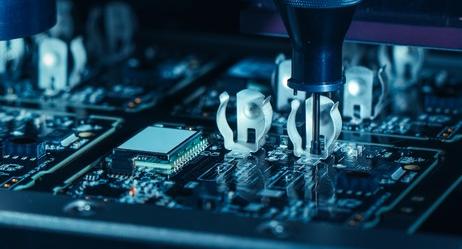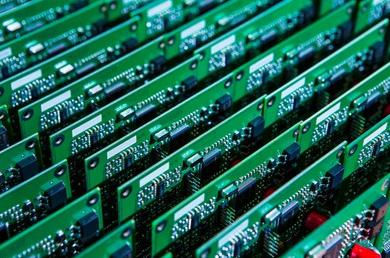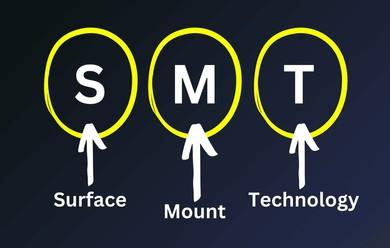Content Menu
● Understanding Surface Mount Technology
>> Key Features of T5S Surface Mount Devices
● Benefits of Using T5S Surface Mount Devices
>> Space Efficiency
>> Reduced Weight
>> Improved Performance
>> Automated Assembly
>> Cost-Effectiveness
>> Flexibility in Design
>> Enhanced Reliability
● Applications of T5S Surface Mount Devices
● Conclusion
● Related Questions
>> 1. What is the difference between surface mount devices and through-hole components?
>> 2. How does Surface Mount Technology improve manufacturing efficiency?
>> 3. What are the common applications of T5S surface mount devices?
>> 4. Are T5S surface mount devices more reliable than traditional components?
>> 5. What are the cost implications of using T5S surface mount devices?
Surface Mount Devices (SMDs) have revolutionized the electronics industry, particularly with the advent of Surface Mount Technology (SMT). Among the various types of SMDs, T5S devices stand out due to their unique advantages. This article explores the benefits of using T5S surface mount devices, their applications, and their impact on modern electronics manufacturing.

Understanding Surface Mount Technology
Surface Mount Technology (SMT) is a method for producing electronic circuits in which the components are mounted directly onto the surface of printed circuit boards (PCBs). This contrasts with traditional through-hole technology, where components are inserted into holes in the PCB. SMT allows for a more compact design, enabling manufacturers to create smaller and more efficient electronic devices.
Key Features of T5S Surface Mount Devices
T5S surface mount devices are characterized by their compact size, lightweight design, and efficient performance. They typically feature short leads or no leads at all, which allows for a more streamlined assembly process. The T5S designation often refers to specific types of components, such as resistors, capacitors, and integrated circuits, that are optimized for surface mounting.
Benefits of Using T5S Surface Mount Devices
Space Efficiency
One of the most significant advantages of T5S surface mount devices is their space efficiency. Because these devices are smaller than traditional components, they allow for more compact PCB designs. This is particularly beneficial in applications where space is at a premium, such as in mobile devices, wearables, and compact consumer electronics.
Reduced Weight
T5S devices are lighter than their through-hole counterparts. This reduction in weight is crucial for portable electronics, where every gram counts. Lighter devices can lead to improved battery life and enhanced user experience, making T5S devices ideal for modern electronic applications.
Improved Performance
The design of T5S surface mount devices often leads to improved electrical performance. The shorter leads reduce inductance and resistance, which can enhance signal integrity and reduce noise. This is particularly important in high-frequency applications, where performance can be significantly impacted by component design.
Automated Assembly
T5S surface mount devices are well-suited for automated assembly processes. The ability to use pick-and-place machines for assembly reduces labor costs and increases production speed. This automation also minimizes the risk of human error, leading to higher quality and more reliable products.

Cost-Effectiveness
While the initial investment in SMT equipment can be high, the long-term cost savings are substantial. The efficiency of T5S devices in terms of space and weight can lead to lower shipping costs and reduced material usage. Additionally, the faster assembly times contribute to lower overall production costs.
Flexibility in Design
T5S surface mount devices offer greater flexibility in PCB design. Designers can create more complex circuits with higher component densities, enabling innovative product designs. This flexibility is essential in today's fast-paced electronics market, where rapid prototyping and design iterations are common.
Enhanced Reliability
The soldering process used for T5S devices typically results in stronger connections compared to through-hole components. This enhanced reliability is crucial in applications where devices are subjected to vibration, shock, or thermal cycling. The robust nature of these connections can lead to longer product lifespans and reduced failure rates.
Applications of T5S Surface Mount Devices
T5S surface mount devices are used across various industries, including:
- Consumer Electronics: Smartphones, tablets, and wearables benefit from the compact size and lightweight nature of T5S devices.
- Automotive: Modern vehicles utilize T5S devices in their electronic control units (ECUs) for improved performance and reliability.
- Medical Devices: The precision and reliability of T5S devices make them ideal for critical medical applications, such as monitoring equipment and diagnostic devices.
- Telecommunications: High-frequency applications in telecommunications equipment often rely on the performance advantages of T5S surface mount devices.
Conclusion
The benefits of using T5S surface mount devices are clear. From space efficiency and reduced weight to improved performance and cost-effectiveness, these devices play a crucial role in modern electronics manufacturing. As technology continues to advance, the demand for smaller, lighter, and more efficient components will only grow, making T5S devices an essential part of the future of electronics.

Related Questions
1. What is the difference between surface mount devices and through-hole components?
Surface mount devices (SMDs) are mounted directly on the surface of PCBs, while through-hole components are inserted into holes in the PCB. SMDs are generally smaller and allow for more compact designs.
2. How does Surface Mount Technology improve manufacturing efficiency?
Surface Mount Technology allows for automated assembly processes, reducing labor costs and increasing production speed. This automation also minimizes the risk of human error.
3. What are the common applications of T5S surface mount devices?
T5S surface mount devices are commonly used in consumer electronics, automotive applications, medical devices, and telecommunications equipment.
4. Are T5S surface mount devices more reliable than traditional components?
Yes, T5S surface mount devices typically have stronger solder connections, leading to enhanced reliability in various applications.
5. What are the cost implications of using T5S surface mount devices?
While the initial investment in SMT equipment can be high, the long-term cost savings from reduced material usage and faster assembly times make T5S devices cost-effective.




















